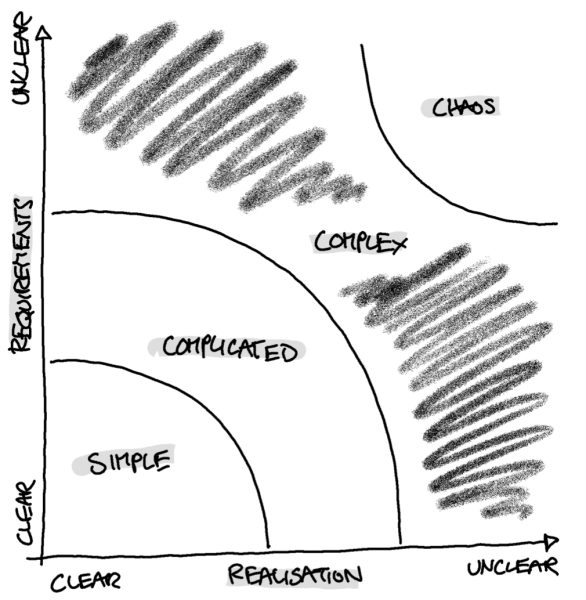This week’s 12 links:
- Failspace: a research project exploring how the cultural sector can learn from failure, as an integral process of making and evaluating work. The takeaway? If we keep focusing on ‘successes’ in our evaluations and reports, to make sure we *look* good, we won’t learn and change.
Tags: measurement - TEST: Transformational Ethical Story Telling, by OurRace in Australia – an anti-oppressive framework that ensures Story Holders create and control their stories on their own terms. Principle #3 is:“Recognising that the rights of Story Holders can be threatened by individuals, organisations, institutions and corporations which use their Stories contrary to the wishes and often to the detriment of Story Holders.”Reminded me of Nils Christie’s work on ‘conflict as property’ and how people can lose control of their narratives and rights to participate – even when their voice should be at the centre.
Tags: engagement, facilitation - Liberating Compassion: closing the ‘Compassion Gap’ – a catalogue of practices developed in health and social care in the UK. “These structured compassion practices are all about reconnecting people to purpose, humanity, self, and each other, in a way that feels accessible, simple, and straightforward to implement. We believe that they can also help in the sometimes challenging work of inclusion, and finding our common humanity.”Nice to know where these are so I can point people to them:
* 60 minute compassion circle
* 20-minute care space
* 10-minute pause space
* 5-minutes me space
Tags: facilitation - Relational Learning, by David Jay of the Relationality Lab: a data-backed, story-driven approach to assessing the impact of relational work. These are the slides of a presentation I attended, where the topic was how we measure relationships – DJ proposes 3 measures:
* gathering – do people come together of their own accord?
* support – do people help one another in their projects and personal lives?
* creative action – do people imagine and execute actions which benefit the community?
Tags: measurement - 40 tools for creating human connection through your digital services, by Deepr: 10 principles, 5 conditions, 40 tools, a 6-step guide… but the link is dead. Soz.
- Building Resilient Organizations: Toward Joy and Durable Power in a Time of Crisis, by Maurice Mitchell on Convergence. A long-form essay about how activist / social justice / progressive spaces can succomb to the very same ills they are trying to combat, with some proposed solutions.
Tags: relationships, conflict - Brainstorm Questions Not Ideas, by Erica Hall on Mule. A neat facilitation process to come up with the questions we need to answer, instead of jumping into brainstorming ideas (which doesn’t always work great). Also then plotting the questions in a risk and importance / certainty matrix for prioritisation.
Tags: facilitation - To Design for All, We Must Design From the Margins– dead link. The following link was related, though.
- Don’t Call Us Edge Cases – Designing From the Margins, by Afsaneh Rigot on the Belfer Center for Science and International Affairs. In the technology sector, main use cases vs edge cases, and how designing to reduce harms for the “edges” benefits the majority. “The reality is that addressing these cases and reframing them as central is not just about improving the design process but also about justice and addressing the human rights abuses caused by technology when it’s used in a context it was not designed for. It is about addressing the effects of western-centrism on vulnerable and/or hard-to-reach communities. Understanding the needs, wants and methods of communities not only protects them, but it makes for better technology internationally. By re-centering – repositioning these vital experiences of the decentered, we are creating tools that protect us all.”
- Strive for alignment rather than aiming for universal agreement, by Robert Musekiwa on LinkedIn. What specific strategies can be used to foster a culture that encourages dissenting opinions and diverse perspectives? How can organisations ensure that individuals commit to the chosen path after a decision has been made? Oh look, psychological safety pops up in this article too! It’s everywhere at the moment.
Tags: organisational learning - Sort Challenges Based On Their Complexity With The“Agreement-Certainty Matrix”: avoid underestimating how complex things are and, because of that, choose the wrong approach to deal with your challenges. A Liberating Structures deep dive into the “agreement-certainty matrix” method. I ran it as a test in a LS gathering once, it was useful. It is based on the work of Ralph Stacey and BrendaZimmermann, and connects into my interest in complexity!
Tags: facilitation, complexity - Stacey, Cynefin, or the question of where agile makes sense, by Dr Stefan Barth on LinkedIn. A very interesting recap of the development of various complexity models. Perfect for the complexity nerd that I am!
Tag: complexity
My time to read:1 hour

Image credit – Dr Stefan Barth in LinkedIn article
